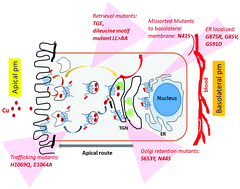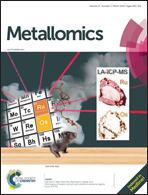A glimpse into the regulation of the Wilson disease protein, ATP7B, sheds light on the complexity of mammalian apical trafficking pathways
Abstract
Wilson disease (WD), a Mendelian disorder of copper metabolism caused by mutations in the ATP7B gene, manifests a large spectrum of phenotypic variability. This phenomenon of extensive symptom variation is not frequently associated with a monogenic disorder. We hypothesize that the phenotypic variability in WD is primarily driven by the variations in interacting proteins that regulate the ATP7B function and localization in the cell. Based on existing literature, we delineated a potential molecular mechanism for ATP7B mediated copper transport in the milieu of its interactome, its dysfunction in WD and the resulting variability in the phenotypic manifestation. Understanding the copper-induced apical trafficking of ATP7B also significantly contributes to the appreciation of the complexities of the ligand-induced transport pathway. We believe that this holistic view of WD will pave the way for a better opportunity for rational drug design and therapeutics.

- This article is part of the themed collection: Recent Review Articles


 Please wait while we load your content...
Please wait while we load your content...